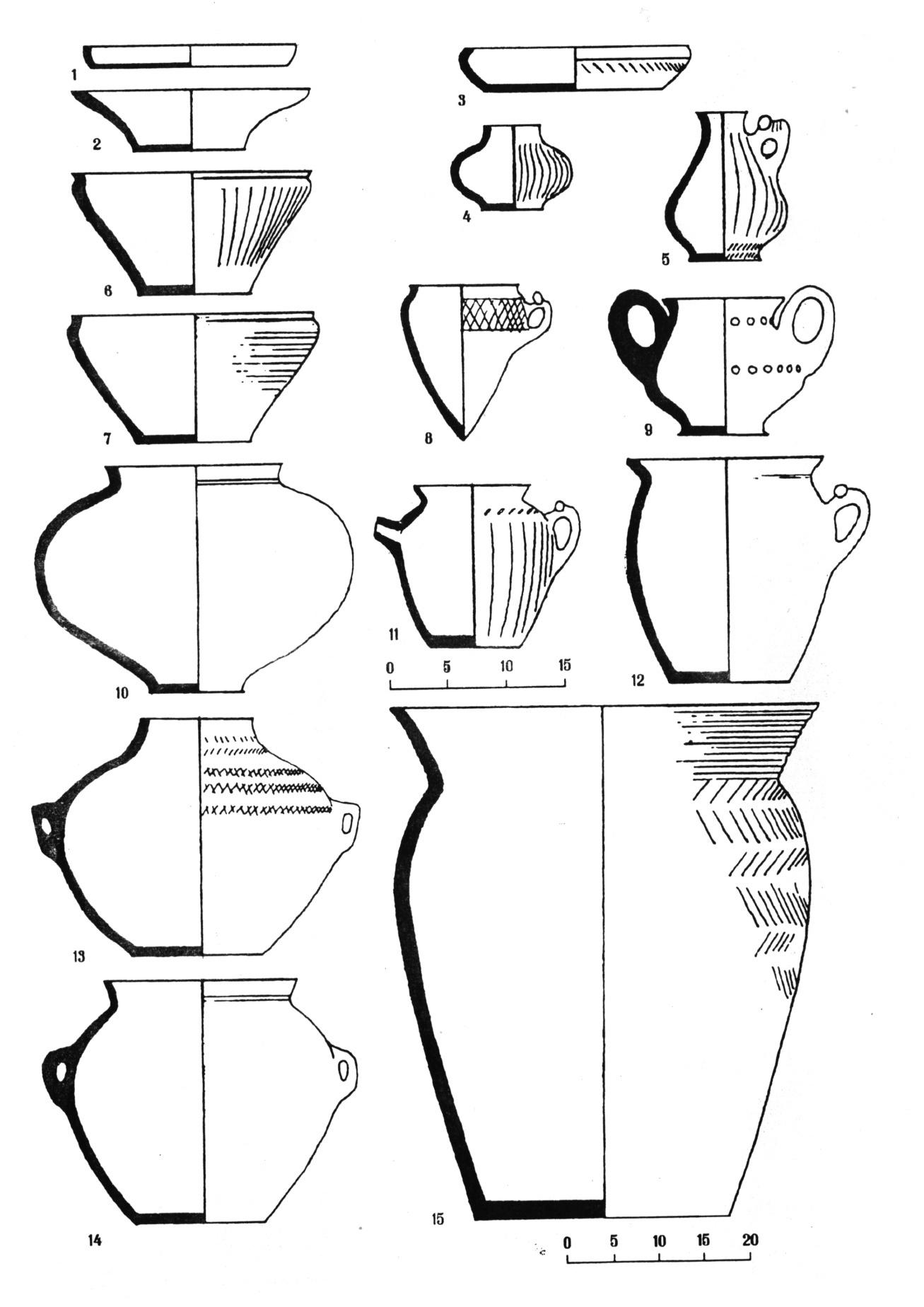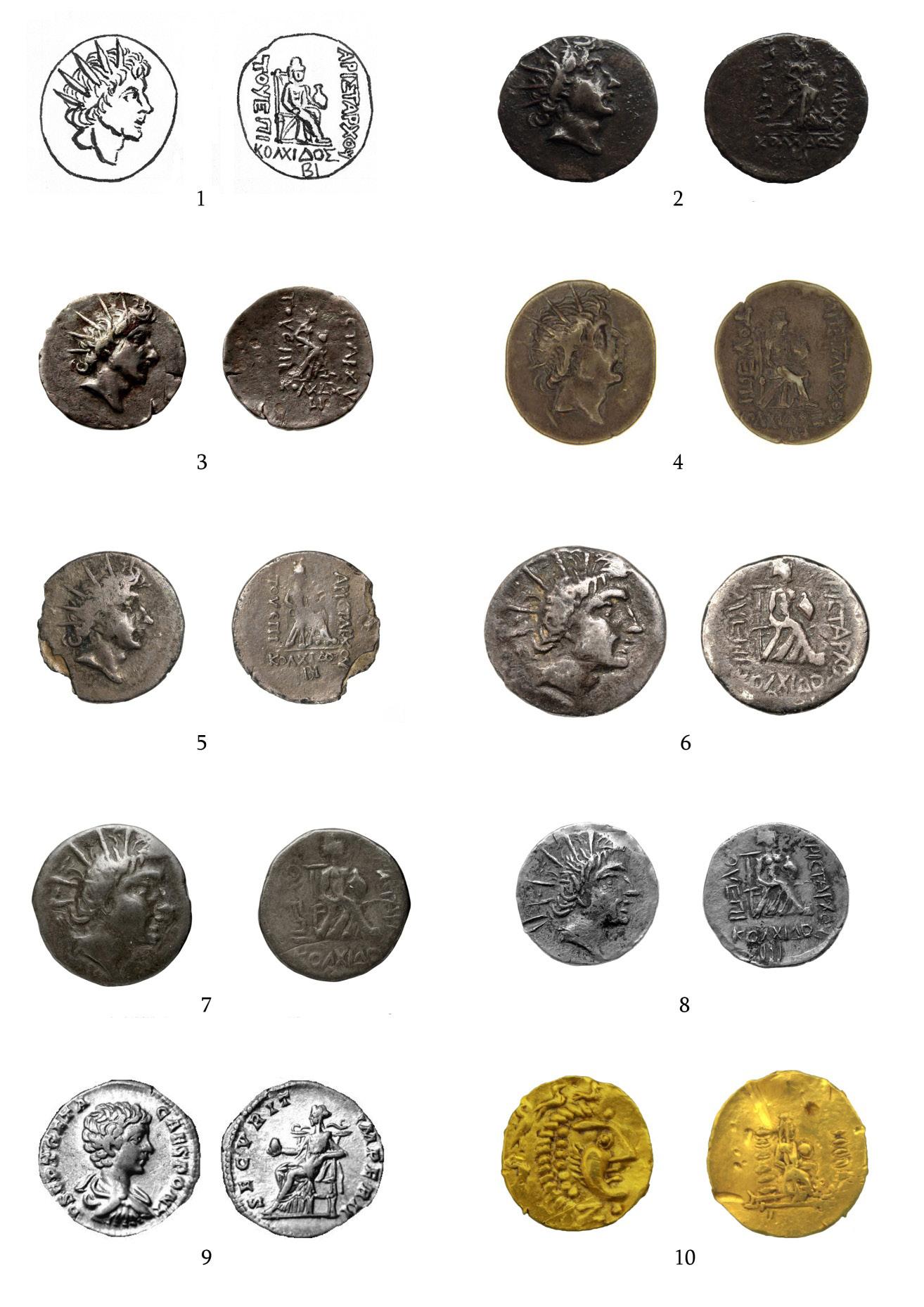Goderdzi Narimanishvili, Nino Shanshashvili Georgian National Museum (Georgia, Tbilisi) House and Household in South Georgian Highlands (Trialeti) in 5th – 4th cc. B.C.
In the 5th – 4th centuries B.C. Trialeti used to be densely populated area in South Georgia. First studies of the sites of this period were conducted by B. Kuftin, who, in 30s’ and 40s’ of 20th century, excavated cemeteries in villages Beshtasheni, Kushchi, Karyak, Dash-Bash and Avranlo1. Contemporary settlements of those cemeteries were not discovered for a long time. Only in 1998 Trialeti Archaeological Expedition discovered the settlement of 5th and 4th cc. B.C. near the village Darakoi and on the mountain Ai-Ilia. Later three settlements (Darakoi, Ai-Ilia, Sakdrioni) were partly excavated2. Choosing household in Trialeti was mainly determined by a landscape and natural conditions. In the 1st mill. B.C. in Trialeti we see at least two landscape types – mountain valleys and forest. Such landscape is different from the recent landscape conditions of the region, which is characterized by poorness of forest biotypes. Basing on palynological data, in the last 15000 years on Tsalka plateau 10 different phases of landscape development were distinguished. 15th – 6th cc. B.C. coincides with the eighth phase, when happens warming of climate. Warming continued till 5th c. B.C. when a cold spell of subatlanic period started, which also was of a global character. Period from the 5th c. B.C. is characterized by a worsening of natural conditions, which continued for several centuries3. It must be mentioned, that from the 5th c. B.C. number of archaeological sites in the region start to decrease. Important is that in the end of the 1st mill. B.C. we find just two settlements (Beshtasheni and Santa). Worsening of the climate conditions is well shown in the palynospectre of Ai-Ilia mountain settlement. There is no warm-lower plants like lime-tree between trees and we see decrease of number of sowing seeds as well as there is not cultivated vine at all. Cattle-breeding had have a main role in the household4. Paleozoological and paleobotanical analysis shows us that that the conditions of the functioning of the Trialeti 1st mill. sites and the conditions of the landscape in resent are different. Landscape of Trialeti determined a choice of area of household. Recent settlements are situated on the banks of the rivers or on the law slopes, where, on one side there are pastures and hayfields and on the other side arable lands. 1. Boris Kuftin, Arkheologicheskie raskopki v Trialeti (Archaeological Excavation in Trialeti). Tbilisi: Publishing House of the Academy of Sciences of the Georgian SSR, 1941;Boris Kuftin, Arkheologicheskie raskopki v Tsalkskom raione (Archaeological excavation in Tsalka region). Tbilisi: Izdatelstvo akademii nauk gruzinskoi ssr, 1948. 2. Goderdzi Narimanishvili, „Darakois namosaxlari da samkhret kavkasiis akemeniduri khanis istoriis zogierti sakitxi“ (Daraqoi Settlement and some Patterns of History of Achaemenid Epoch Transcaucasus). Iberia-Colchis. Researches on the Archaeology and History of Georgia in the Classical and Early Medieval Period. 5 (2009): 94-125. 3. Eliso Kvavadze et al. „Pozdnepleistocenovaya i golocenovaya istoria razvitia landshaftov Tsalki (Ujnaya Gruzia) po palinologicheskim dannim ozernikh i pochvennikh obrazovanii (Late Pleistocene and Holocene History of Landscapes of Tsalka Plateau (Soutern Georgia), based on Palynological Analysis of Lake and soil Formations) Problems of Paleobiology, II (2007),Georgian national Museum:12-22. 4. Eliso Kvavadze and Goderdzi Narimanishvili, “The palaeolandscapes of the Tsalka Plateau in the Late Pleistocene and Holocene”, in Rescue Archaeology in Georgia: The Baku-Tbilisi-Ceihan and South Caucasian pipelines, editor in-chief Gela Gamkrelidze. (Tbilisi, Georgian National Museum, 2010), 580.
66


















